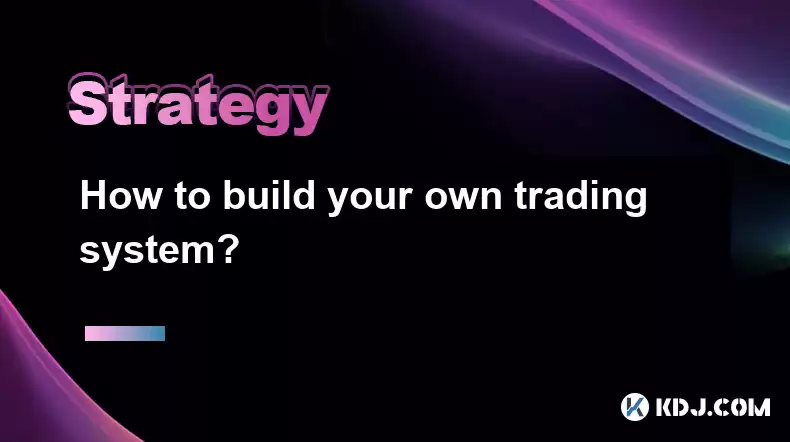-
 Bitcoin
Bitcoin $118700
1.60% -
 Ethereum
Ethereum $4230
-1.16% -
 XRP
XRP $3.197
-2.08% -
 Tether USDt
Tether USDt $1.000
-0.01% -
 BNB
BNB $803.3
-0.46% -
 Solana
Solana $183.2
0.06% -
 USDC
USDC $0.9999
0.00% -
 Dogecoin
Dogecoin $0.2343
-3.95% -
 TRON
TRON $0.3390
1.00% -
 Cardano
Cardano $0.8020
-1.93% -
 Hyperliquid
Hyperliquid $45.18
2.39% -
 Chainlink
Chainlink $22.04
3.02% -
 Stellar
Stellar $0.4449
-1.66% -
 Sui
Sui $3.872
-2.14% -
 Bitcoin Cash
Bitcoin Cash $570.6
-0.37% -
 Hedera
Hedera $0.2593
-2.92% -
 Ethena USDe
Ethena USDe $1.001
-0.01% -
 Avalanche
Avalanche $23.83
-3.79% -
 Litecoin
Litecoin $124.5
1.83% -
 Toncoin
Toncoin $3.335
-2.74% -
 UNUS SED LEO
UNUS SED LEO $9.029
0.26% -
 Shiba Inu
Shiba Inu $0.00001363
-2.31% -
 Uniswap
Uniswap $10.93
-1.42% -
 Polkadot
Polkadot $4.060
-2.29% -
 Dai
Dai $1.000
-0.01% -
 Cronos
Cronos $0.1631
2.71% -
 Ethena
Ethena $0.7746
3.06% -
 Pepe
Pepe $0.00001208
-3.73% -
 Bitget Token
Bitget Token $4.445
-1.47% -
 Monero
Monero $268.7
-2.30%
How to build your own trading system?
Building a customized trading system empowers traders with greater control, personalization, and a systematic approach to navigating market dynamics.
Feb 25, 2025 at 08:25 am

Key Points:
- Understanding and Defining Trading Systems
- Data Collection and Analysis
- Strategy Development and Testing
- System Refinement and Optimization
- Backtesting and Simulation
- Live Trading and Risk Management
- Emotional Intelligence and Discipline
How to Build Your Own Trading System
1. Understanding and Defining Trading Systems
A trading system refers to a structured set of rules and guidelines that guide trading decisions. Successful systems rely on a comprehensive understanding of market dynamics, technical analysis, and risk management principles. While external systems can be purchased or rented, building your own offers greater control and customization potential.
2. Data Collection and Analysis
Historical price data is the foundation of any trading system. Data collection involves sourcing reliable sources, selecting relevant time frames, and formatting the data for analysis. Statistical techniques, such as trend analysis, volatility measurement, and correlation studies, help identify patterns and trends that can form the basis of trading strategies.
3. Strategy Development and Testing
Trading strategies specify the criteria for entering and exiting positions. They can be based on technical indicators, fundamental analysis, or a combination of both. Before implementing a strategy, rigorous testing is crucial to assess its potential profitability and risk-reward profile. Testing methods include paper trading and simulated trading.
4. System Refinement and Optimization
The initial strategy should be iteratively refined based on testing results. This involves adjusting parameters, adding or removing components, and experimenting with different combinations. Optimization techniques help identify the optimal settings that maximize profit and minimize risk within specified parameters.
5. Backtesting and Simulation
Backtesting involves running a trading system against historical data to evaluate its performance over multiple market conditions. Simulation models allow for testing in real-time with simulated capital, providing a risk-free environment for fine-tuning the system and managing emotional responses to market fluctuations.
6. Live Trading and Risk Management
After successful backtesting, the system can be deployed in live trading. Risk management is paramount, including setting trade limits, hedging positions, and managing capital allocation. Emotional discipline is crucial, as unexpected market events can trigger fear or greed.
7. Emotional Intelligence and Discipline
Emotional intelligence involves understanding and managing the psychological aspects of trading. It encompasses self-awareness, self-control, and the ability to stay focused during market volatility. Discipline requires adhering to the trading system regardless of external influences or personal emotions.
FAQs:
Q: What are the benefits of building your own trading system?
A: Building your own system allows for customization tailored to your specific trading style, risk tolerance, and market niche. It enhances control over the trading process, fosters deeper market understanding, and encourages a systematic approach to decision-making.
Q: What resources are available to assist in building a trading system?
A: Numerous resources exist, including online forums, trading communities, and books. Some platforms offer tools for data analysis, strategy development, and backtesting. Seeking guidance from experienced traders can also be beneficial.
Q: Is it possible to consistently generate profit using a trading system?
A: While no system is foolproof, a robust and well-tested system can significantly improve trading outcomes. Profitability depends on factors such as market conditions, risk management, and emotional discipline. Consistent profit requires ongoing system refinement and a long-term perspective.
Q: How can I learn emotional intelligence and discipline in trading?
A: Emotional intelligence and discipline can be developed through practice, meditation, and self-reflection. Techniques such as journaling, reviewing past trades, and setting realistic goals help traders manage emotions and maintain a controlled mindset in the face of market uncertainties.
Disclaimer:info@kdj.com
The information provided is not trading advice. kdj.com does not assume any responsibility for any investments made based on the information provided in this article. Cryptocurrencies are highly volatile and it is highly recommended that you invest with caution after thorough research!
If you believe that the content used on this website infringes your copyright, please contact us immediately (info@kdj.com) and we will delete it promptly.
- LYNO AI & XRP: Decoding the ROI Potential in a Shifting Crypto Landscape
- 2025-08-11 04:30:11
- Cryptos on the Cusp: Cold Wallet, Price Breakouts, and What's Hot Now
- 2025-08-11 04:50:11
- Dogecoin, Meme Coins, and Remittix Utility: What's the Hype?
- 2025-08-11 04:50:11
- Sky Bet, ESPN, and the Spartans Bonus: A Betting Landscape Overview
- 2025-08-11 05:11:16
- Altcoin Buyouts & Market Removals: Crypto Development's Wild Ride
- 2025-08-11 04:30:11
- Bitcoin Banks Arrive: El Salvador's Bold Play with Investment Banks and Crypto
- 2025-08-11 04:55:12
Related knowledge

How to use stop-loss orders to limit potential losses?
Aug 08,2025 at 02:01pm
Understanding Stop-Loss Orders in Cryptocurrency TradingA stop-loss order is a risk management tool used by traders to automatically sell a cryptocurr...

What are the most promising altcoins to invest in?
Aug 10,2025 at 11:42am
Understanding the Role of Private Keys in Cryptocurrency WalletsIn the world of cryptocurrency, private keys are the cornerstone of ownership and cont...

How to read cryptocurrency charts and use technical analysis?
Aug 08,2025 at 11:08am
Understanding the Basics of Cryptocurrency ChartsCryptocurrency charts are graphical representations of price movements over time. These charts are es...

What is the difference between long-term holding (HODLing) and short-term trading?
Aug 10,2025 at 05:30pm
Understanding HODLing in the Cryptocurrency SpaceThe term HODL originated from a typo in a 2013 Bitcoin forum post and has since become a widely accep...

How to do your own research (DYOR) before investing in a crypto project?
Aug 08,2025 at 09:07pm
Understanding the Core Principles of DYOR in CryptocurrencyEngaging in due diligence before investing in any cryptocurrency project is essential to mi...

How to build a diversified crypto portfolio?
Aug 09,2025 at 12:21pm
Understanding the Importance of Diversification in CryptoDiversification in the cryptocurrency space is a strategy used to reduce risk by spreading in...

How to use stop-loss orders to limit potential losses?
Aug 08,2025 at 02:01pm
Understanding Stop-Loss Orders in Cryptocurrency TradingA stop-loss order is a risk management tool used by traders to automatically sell a cryptocurr...

What are the most promising altcoins to invest in?
Aug 10,2025 at 11:42am
Understanding the Role of Private Keys in Cryptocurrency WalletsIn the world of cryptocurrency, private keys are the cornerstone of ownership and cont...

How to read cryptocurrency charts and use technical analysis?
Aug 08,2025 at 11:08am
Understanding the Basics of Cryptocurrency ChartsCryptocurrency charts are graphical representations of price movements over time. These charts are es...

What is the difference between long-term holding (HODLing) and short-term trading?
Aug 10,2025 at 05:30pm
Understanding HODLing in the Cryptocurrency SpaceThe term HODL originated from a typo in a 2013 Bitcoin forum post and has since become a widely accep...

How to do your own research (DYOR) before investing in a crypto project?
Aug 08,2025 at 09:07pm
Understanding the Core Principles of DYOR in CryptocurrencyEngaging in due diligence before investing in any cryptocurrency project is essential to mi...

How to build a diversified crypto portfolio?
Aug 09,2025 at 12:21pm
Understanding the Importance of Diversification in CryptoDiversification in the cryptocurrency space is a strategy used to reduce risk by spreading in...
See all articles

























































































